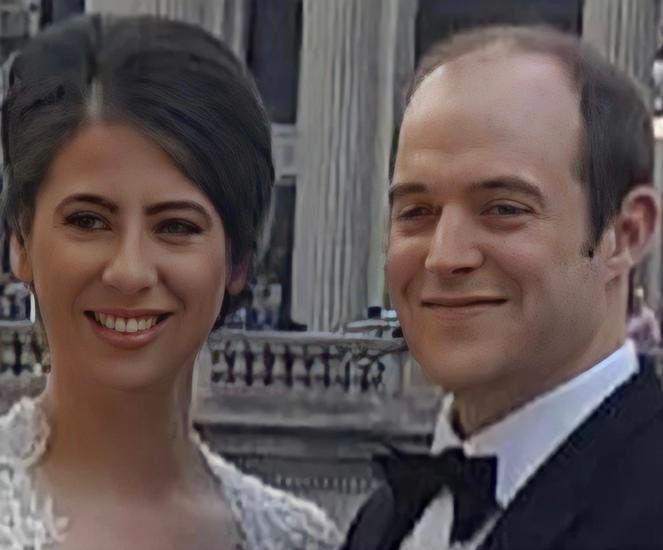Desi Wilkinson, a Belfast ethnomusicologist who plays in the Sligo/Leitrim style, will be at Augusta this year.
By Daniel Neely
We’re getting on into the summer, which means that it’s festival and arts week time! There are lots out there to choose from, including Catskills Irish Arts Week (July 10-16, catskillsirishartsweek.com), MAD Week (July 17-22, www.ccemadweek.org), and the Augusta Irish Week (July 24-29, augustaheritagecenter.org), the one for which I am artistic coordinator.
This summer, Augusta, which was originally modeled after Willie Week and is the oldest such week in the country, will celebrate its 35th anniversary and attendees have a wonderful crew to look forward to. Our teaching team will include Billy McComiskey (accordion and our ceili band mini class), Padraig McEneany (set & ceili dancing), Rose Flanagan (basic/intermediate fiddle), MacDara Ó Raghallaigh (advanced fiddle), Matthew Olwell (flute from scratch), Máirtín de Cógáin (bodhrán), Sean Earnest (backing concepts in Irish music), Fiona Balestrieri (folk arts for kids / Irish tunes, dances, and stories), Nuala Kennedy (traditional songs in English and Irish), Joey Abarta (whistle), and Shannon Dunne (dance assistant & sean nós mini class). Our additional staff includes some top artists as well: the outstanding fiddlers Nathan Gourley and Matt Mancuso, and the brilliant sean nós dancer Jackie O’Riley. If that weren’t enough, legendary Sliabh Luachra musicians Matt Cranitch and Jackie Daly, who will join us as our “Artists in Residence” for one of the days.
In addition, we will also host flute player Desi Wilkinson to teach a course called “traditional Irish flute.” A Belfast native who plays in the Sligo-Leitrim style, Wilkinson is a brilliant, accomplished player and a respected teacher. In addition to several outstanding solo albums, he's a member (with piper Ronan Brown and bouzouki player/vocalist Seán Corcoran) of the group Cran, he’s recorded with Dolores Keane, and he’s toured with the likes of the band Dé Dannan, singer Andy Irvine, fiddler Gerry O’Connor, and accordionist Máirtín O’Connor, to name a few.
He’s also an ethnomusicologist (PhD, University of Limerick). A longtime lecturer at the International Centre for Music Studies at Newcastle University, he is currently the traditional artist in residence at University College Cork. Some readers may remember that I, too, am an ethnomusicologist (PhD, New York University, 2008) and have a deep affinity for musician-scholars who engage in this level of research, so you can imagine my excitement when I learned Wilkinson had a new book out, “Call to the Dance: An Experience of the Socio-Cultural World of Traditional Breton Music and Dance.” It was excitement that was absolutely warranted.
Wilkinson’s book is a short (xvii + 161 pp.), concise work that “charts the recent historical development of a valued and respected Breton popular cultural identity – both at home and abroad – through the invention and diffusion of an event, the fest noz” and contextualizes its importance. In five chapters, Wilkinson explores the somewhat expansive French language term “celtitude” and the role “Irishness” played in community development. He balances this against the more locally-bound notion of “bretonnitude” to show the different practices and dispositions that characterize Breton culture. This lays the groundwork for an historio- and ethnographic account of the fest noz which does a handy job of demonstrating its cultural import. He concludes his book with a pair of chapters that looks at style, repertory and transmission, a more nuts-and-bolts approach that adds vibrancy to the earlier subjects.
The book includes 18 figures and comes with a 14-track CD of Wilkinson’s field recordings that is intended as a companion to chapter four. The recording quality of CD is uniformly high and will prove indispensable, especially to those whose experience with Breton music is minimal.
“Call to the Dance” is a thoughtful, well-appointed representation of contemporary issues in Breton music. Wilkinson’s analysis is sharp, his history streamlined, and his ethnography conceived with a reflexive sense of his “place” in the field. Although his prose isn’t bogged down with technical terms, Wilkinson’s approach may challenge readers not used to the rigor of academic convention. Regardless, this book will prove invaluable to people interested in Brittany’s music and culture, especially those looking to understand where they stand today. For more information about “Call to the Dance,” visit tinyurl.com/DesiFlute.









